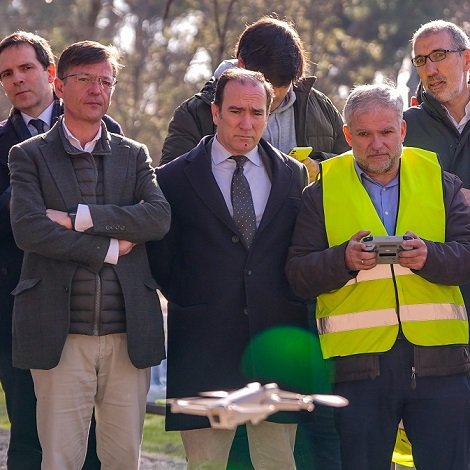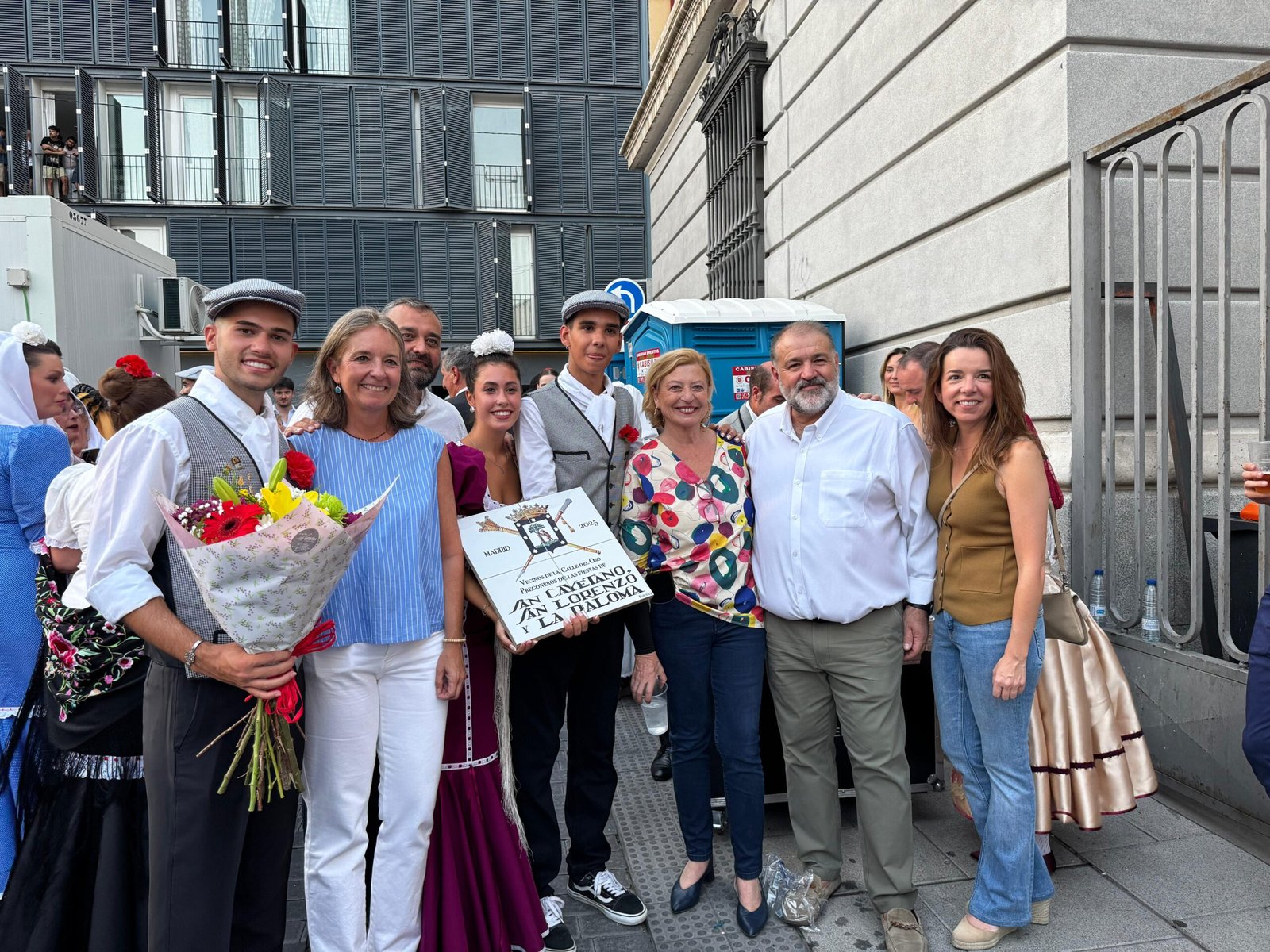The first drone flight for detecting processionary caterpillar nests in tall trees was carried out this morning in Dehesa de la Villa Park. Urban Planning, Environment, and Mobility Delegate Borja Carabante, accompanied by Cleaning and Green Areas Delegate José Antonio Martínez Páramo, and Moncloa-Aravaca Councilor Borja Fanjul, visited this green area, recently declared a Cultural Interest Site of the Community of Madrid in the category of Cultural Landscape, to observe how these tasks are being carried out.
Carabante explained that this is an experimental procedure to assist municipal technicians in detecting caterpillar nests in locations where the size of the trees makes it difficult to verify their presence. If the pilot conducting the operation, from Acciona, the current responsible party for maintaining the historical and forest parks in the city, achieves positive results, the drone could be incorporated in areas such as El Retiro, Casa de Campo, Capricho, Tres Cantos, La Elipa, San José, or Dehesa Boyal.
As the delegate pointed out, the Madrid City Council is finalizing the work to control and reduce processionary caterpillars in parks and green areas of the municipality. Since January, 72,907 nests have been removed, more than triple the number from the previous year, and 4,578 rings have been placed around the tree trunks to prevent the caterpillars from descending to the ground, more than double the amount from last year’s campaign.
A Campaign Starting in Summer
The treatment of processionary caterpillar infestations is carried out using environmentally friendly techniques. The actions always start in summer and continue until February, encompassing four interventions: pheromone traps, application of authorized phytosanitary products through endotherapy, nest removal, and placement of perimeter rings on the trees.
Firstly, during the summer months, pheromone traps are placed in municipal green areas to attract and capture male processionary moths. This strategy disrupts the mating of female moths, reducing egg laying and the subsequent emergence of caterpillars. In the current campaign, a total of 4,259 traps of this type have been deployed (4,233 in 2023-2024).
Between October and November, endotherapy is applied to numerous trees. This technique involves introducing authorized phytosanitary products into the sap of the trees through small holes, so they reach the leaves that the caterpillars consume and perish. This treatment is selectively applied to specimens that are difficult to access, either due to their height or their location in inner courtyards or enclosed areas, and has been applied to 2,530 trees.
Nest removal is carried out during January and February, using pole pruners or pruning platforms to access the nests located in the treetops, mainly pines and cedars. This task requires significant effort and is considered the most effective in eliminating these insects. A total of 72,907 nests have been removed during January and February, more than triple the number from the previous year (21,198 nests in 2023-2024).
As explained, the final phase of the treatment takes place in February, when perimeter rings are installed around the tree trunks to prevent the caterpillars from descending to the ground and forming processions. In the current campaign, 4,578 rings have been placed, more than double the number from the previous year (1,717 rings in 2023-2024).
Fewer Caterpillar Nests in Trees
The work carried out by the City Council in previous campaigns has had a significant impact on reducing the number of nests over the past years, demonstrating the commitment and effectiveness of the actions taken to address this issue.
The work is focused on playgrounds, recreational areas, and school surroundings. The tasks are part of the current contracts for the conservation, maintenance, and cleaning of green areas and street trees in the city of Madrid and parks and nurseries.
Madrid also promotes biodiversity in the city by supporting populations of insect-eating birds like the blue tit and the great tit that prey on processionary caterpillars, becoming an additional ally in the fight against this pest.
Recommendations to Citizens in the Presence of Caterpillars
The Madrid City Council reminds citizens of the importance of avoiding manipulation and close contact with processionary caterpillars. The natural curiosity of children and pets towards the peculiar behavior of these insects can dangerously lead them to approach or even manipulate them directly. It is crucial to note that when threatened, caterpillars can release irritating hairs that cause injuries to the eyes, skin, and mucous membranes.
If any citizen detects the presence of processionary caterpillars, they are advised not to come into contact with them and to immediately contact municipal services through the toll-free number 010. This way, the necessary intervention can be requested in the affected area, if it is municipally owned. In the case of private parks, individuals are urged to contact the responsible parties to take appropriate measures.
It is recommended not to attempt the removal of processionary caterpillar nests on your own; it is essential to seek the assistance of experts in phytosanitary pest control. Improper handling of solvents, gasoline, or insecticides always poses a considerable risk to people and the environment. /
More information at this link.



